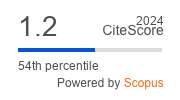Does Environmental Court Lead to Local Green Growth? Evidence from 230 Cities in China
DOI:
https://doi.org/10.52152/22.2.161-181(2024)Keywords:
environmental governance, environmental court, green growth, local government, difference-in-differencesAbstract
To tackle the multifaceted environmental challenges and bolster environmental law enforcement in China, environmental courts have proliferated across many cities since 2007. However, their actual effects on economic growth, a central concern for governments at all levels, have yet to be thoroughly investigated. Leveraging the panel data of 230 cities from 2007-2016 and taking the establishment of environment courts as a quasi-natural experiment, this paper uses the difference-in-differences (DID) approach to examine the effects of building environmental courts on green economic growth at the prefectural level. We find that first, the effect is positive and significant; second, on possible channel for the boosting effect of environment court is through increasing technological innovation; third, the effect of court on green growth is more significant after two to three years. These findings provide references for both scholars of environmental politics and practitioners of green development in local governments.
References
Alex, W. L. (2013). The search for sustainable legitimacy: Environmental law and bureaucracy in China. Harvard Environmental Law Review, 37(2), 365-440.
Alex, W. L., & Jie, G. (2010). Environmental courts and the development of environmental public interest litigation in China. Journal of Court Innovation, 3(1), 37-50.
Ambec, S., Cohen, M. A., Elgie, S., & Lanoie, P. (2013). The porter hypothesis at 20: Can environmental regulation enhance innovation and competitiveness?. Review of environmental economics and policy, 7(1), 1157-1159.
Charnes, A., Cooper, W. W., & Rhodes, E. (1978). Measuring the efficiency of decision making units. European journal of operational research, 2(6), 429-444.
Clarke, D. C. (2003). Economic development and the rights hypothesis: The China problem'(2003). American Journal of Comparative Law, 51(1), 89-111.
Eaton, S., & Kostka, G. (2014). Authoritarian environmentalism undermined? Local leaders' time horizons and environmental policy implementation in China. China Quarterly, 218, 359-380.
Egilmez, G., Kucukvar, M., & Tatari, O. (2013). Sustainability assessment of US manufacturing sectors: An economic input output-based frontier approach. Journal of Cleaner Production, 53, 91-102.
Ekins, P. (2002). Economic growth and environmental sustainability: The prospects for green growth. London, UK: Routledge.
Fan, G., Wang, X., & Ma, G. (2012). The contribution of marketization to China's economic growth. China Economist, 7(2), 4-16.
Fan, Z., & Zhao, R. (2019). Does rule of law promote pollution control? Evidence from the establishment of the environmental court. Economic Research Journal, 54(3), 21-37.
Färe, R., Grosskopf, S., & Pasurka, Jr, C. A. (2001). Accounting for air pollution emissions in measures of state manufacturing productivity growth. Journal of Regional Science, 41(3), 381-409.
Farzin, Y. H., & Bond, C. A. (2006). Democracy and environmental quality. Journal of Development Economics, 81(1), 213-235.
Goldsmith, R. W. (1951). A perpetual inventory of national wealth. Studies in Income and Wealth, 14, 5-73.
Goron, C. (2018). Ecological civilisation and the political limits of a Chinese concept of sustainability. China Perspectives, (4), 39-52. doi: 10.4000/chinaperspectives.8463
Guttman, D., Young, O., Yijia, J., Bramble, B., Maoliang, B., Carmen, C., . . . Zeidan, R. (2018). Environmental governance in China: Interactions between the state and "nonstate actors". Journal of environmental management, 220, 126-135.
Haggard, S., MacIntyre, A., &Tiede, L. (2008). The rule of law and economic development. Annual Review of Political Science, 11, 205-234.
Harrison, J. (2013) Reflections on the role of international courts and tribunals in the settlement of environmental disputes and the development of international environmental law. Journal of Environmental Law, 25(3), 501-514.
Heilmann, S. (2008). From local experiments to national policy: The origins of China's distinctive policy process. The China Journal, 59, 1-30.
Hoban, T. M. (2018). Green justice: The environment and the courts. London, UK: Routledge.
Huang, J., & Xin, G. (2022). To get rich is glorious: Private entrepreneurs in China’s anti-poverty campaign. Journal of Chinese Political Science, 27(2), 271-294.
Jänicke, M. (2012). "Green growth": From a growing eco-industry to economic sustainability. Energy Policy, 48, 13-21.
Jessica, T. C., & William, H. (Eds.). (2014). Local governance innovation in China: Experimentation, diffusion, and defiance. London, UK: Routledge.
Kaniaru, D. (2007). Environmental tribunals as a mechanism for settling disputes. Environmental Policy and Law, 37(6), 459-466.
Kostka, G., & Mol, A. P. (2013). Implementation and participation in China's local environmental politics: Challenges and innovations. Journal of Environmental Policy & Planning, 15(1), 3-16.
Kumar, S. (2006). Environmentally sensitive productivity growth: A global analysis using Malmquist–Luenberger index. Ecological Economics, 56(2), 280-293.
Liu, G., Xin, G., & Li, J. (2021). Making political connections work better: Information asymmetry and the development of private firms in China. Corporate Governance: An International Review, 29(6), 593-611.
Liu, J., & Diamond, J. (2008). Revolutionizing China's environmental protection. Science, 319(5859), 37-38.
Liu, L., Xin, G., & Yi, H. (2023). Information asymmetry and vertical collective action dilemma: The case of targeted poverty alleviation in China. Review of Policy Research, 1-25. doi: 10.1111/ropr.12575
Liu, Y., Li, Z., & Yin, X. (2018). Environmental regulation, technological innovation and energy consumption—a cross-region analysis in China. Journal of Cleaner Production, 203, 885-897.
Lipman, Z. (2004). Editorial commentary: the land and environment court: Reforms to the merit appeal process. Environmental and Planning Law Journal, 21(6), 415-423.
Lo, K. (2015). How authoritarian is the environmental governance of China?. Environmental Science & Policy, 54, 152-159.
Lorek, S., & Spangenberg, J. H. (2014). Sustainable consumption within a sustainable economy-beyond green growth and green economies. Journal of Cleaner Production, 63, 33-44.
Macrory, R. B., & Woods, M. (2003). Modernizing environmental justice: Regulation and the role of an environmental tribunal. London, UK: University College London.
Meng, W., Wang, F., & Xin, G. (2024). Making agile governance work: the community grid as a ‘safety valve’institution during the COVID-19 pandemic. Journal of Chinese Governance, 1-24. doi: 10.1080/23812346.2024.2332005
Organization for Economic Co-operation and Development. (2011). Towards Green Growth. Retrieved form http://www.oecd.org/dataoecd/37/34/48224539.pdf
Ohlan, R. (2015). The impact of population density, energy consumption, economic growth and trade openness on CO2 emissions in India. Natural Hazards, 79(2), 1409-1428.
Omri, A., Nguyen, D. K., & Rault, C. (2014). Causal interactions between CO2 emissions, FDI, and economic growth: Evidence from dynamic simultaneous-equation models. Economic Modelling, 42, 382-389.
Pedersen, O. W. (2012). An international environmental court and international legalism. Journal of Environmental Law, 24(3), 547-558.
Porter, M. (1996). America's green strategy. Business and Environment, 33, 1072.
Preston, B. (2008). Operating an environment court: The experience of the land and environment court of new South Wales. Journal of Environmental Planning and Law, 5, 385-409.
Pring, G., & Pring, C. (2010). Increase in environmental courts and tribunals prompts new global institute. Journal of Court Innovation, 3, 11-21.
Sarkar, A. N. (2013). Promoting eco-innovations to leverage sustainable development of eco-industry and green growth. European Journal of Sustainable Development, 2(1), 171-224.
Smil, V. (2015). The bad earth: Environmental degradation in China. London, UK: Routledge.
Shin, K. (2018). Environmental policy innovations in China: A critical analysis from a low-carbon city. Environmental Politics, 27(5), 830-851.
Yue, S., Yang, Y., & He, Y. (2016). Does foreign direct investment affect green growth? Evidence from China's experience. Sustainability, 8(2),158.
Stein, P. L. (2002). Specialist environmental courts: The land and environment court of new South Wales, Australia. Environmental Law Review, 4(1), 5-25.
Stern, R. E. (2014). The political logic of China's new environmental courts. The China Journal, 72(1), 53-74.
Stinson, M. (2017, June 17). Salesman Xi. Retrieved from https://www.nationalreview.com/magazine/2017/06/26/xi-jinping-china-west-liberals/
Supreme People's Court. (2022, June 5). China environmental resource adjudication (2021). Retrieved from https://www.court.gov.cn/zixun/xiangqing/361291.html
Tone, K., & Tsutsui, M. (2010). An epsilon-based measure of efficiency in DEA-a third pole of technical efficiency. European Journal of Operational Research, 207(3), 1554-1563.
Walters, R., & Westerhuis, D. S. (2013). Green crime and the role of environmental courts. Crime, Law, and Social Change, 59(3), 279-290.
Wang, J., & Liang, W. (2019). Political resources and divergent court empowerment in China: A subnational comparison. Modern China, 45(6), 629-665.
Wang, Z., & Feng, C. (2015). A performance evaluation of the energy, environmental, and economic efficiency and productivity in China: An application of global data envelopment analysis. Applied Energy, 147, 617-626.
World Bank Group. (2012). Inclusive green growth: The pathway to sustainable development. Retrieved from https://www.greengrowthknowledge.org/resource/inclusive-green-growth-pathway-sustainable-development
Xin, G. (2022). What contributes to the formation of stable collaborative water governance? A fuzzy set qualitative comparative analysis of Chinese cases. Lex localis-Journal of Local Self-Government, 20(4): 907-930.
Xin, G., & Chen, J. (2023). Decentralized governance and collective action dilemma: Sub‐national governments' responses to COVID‐19 in China. Public Administration and Development, 43(2), 163-175.
Xu, S. (2017). An estimation of the capital stock and technological progress rates in Chinese cities: 1992-2014. Management World, 1, 17-29.
Yan, X., & Xin, G. (2017). Reforming governance under authoritarianism: motivations and pathways of local participatory reform in the People’s Republic of China. Democratization, 24(3), 405-424.
Young, A. (2003). Gold into base metals: Productivity growth in the people's republic of China during the reform period. Journal of Political Economy, 111(6), 1220-1261.
Zhang, M., Wang, Y., & Zhao, Q. (2020). Does participating in the standards-setting process promote innovation? Evidence from China. China Economic Review, 63, 101532.
Zhou, K., & Xin, G. (2021). Who are the front-runners? Unravelling local government responses to containing the COVID-19 pandemic in China. China Review, 21(1), 37-54.
Zhu, X. (2017). Inter-regional diffusion of policy innovation in China: A comparative case study. Asian Journal of Political Science, 25(3), 266-286.
Downloads
Published
Issue
Section
License
Copyright (c) 2024 Lex localis - Journal of Local Self-Government

This work is licensed under a Creative Commons Attribution-NonCommercial-NoDerivatives 4.0 International License.








